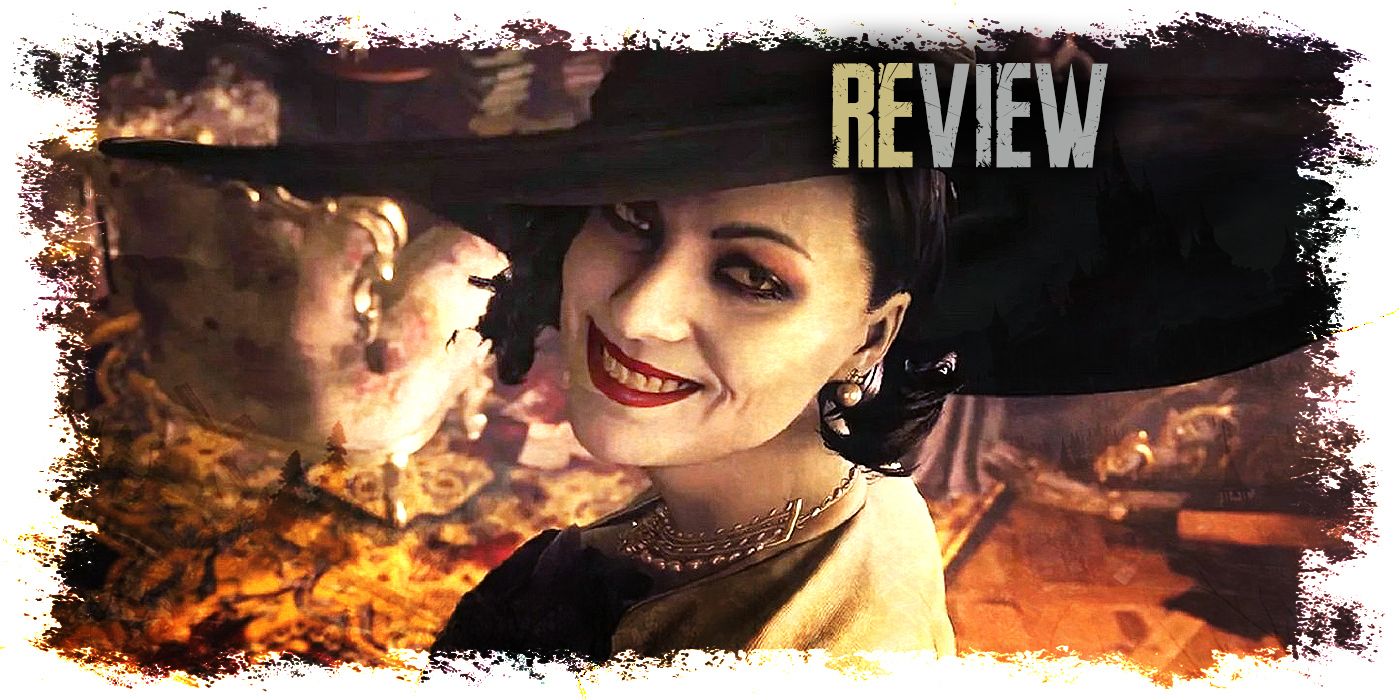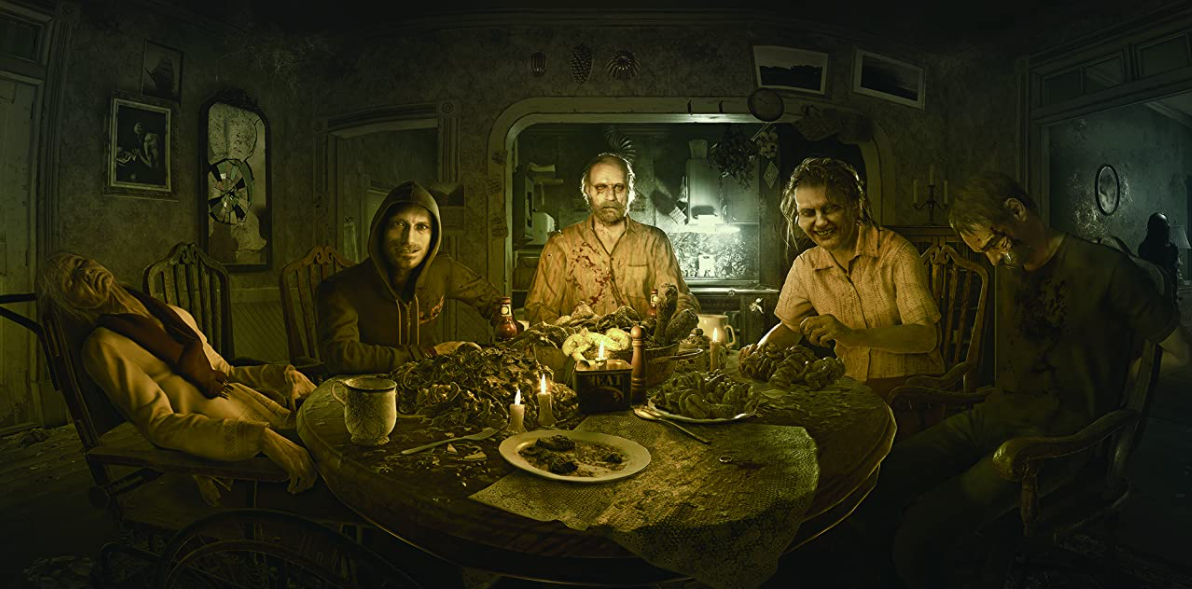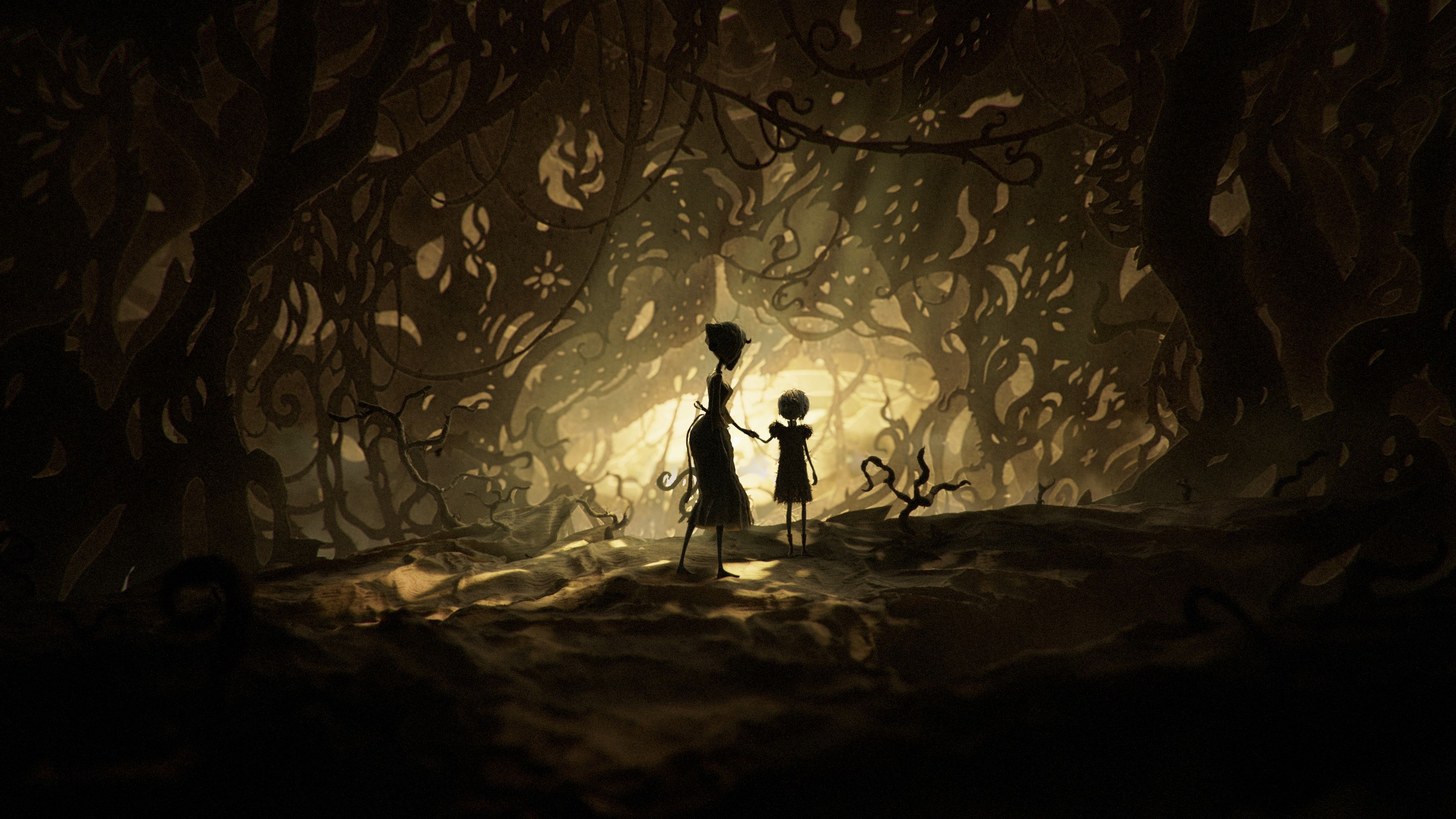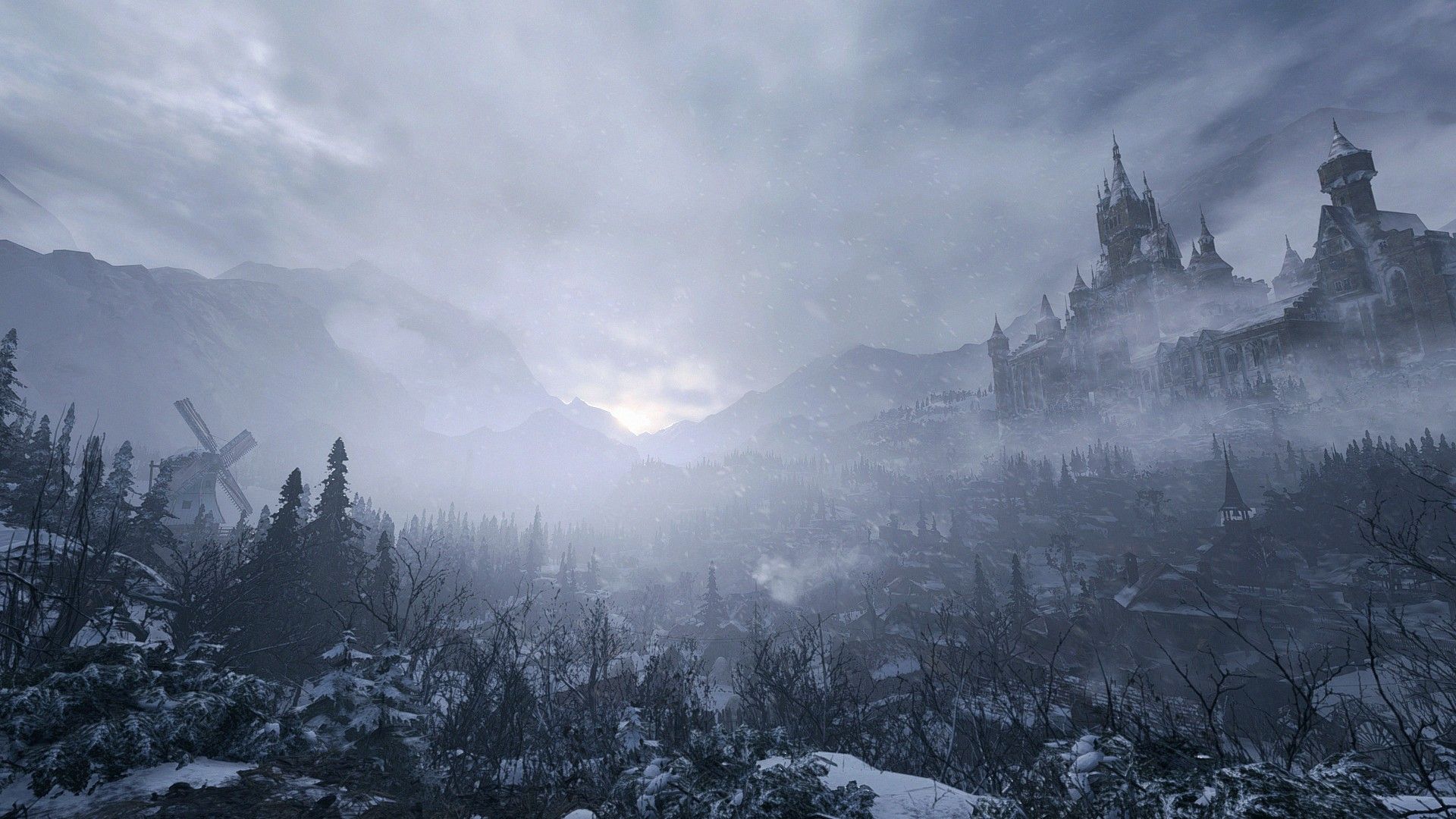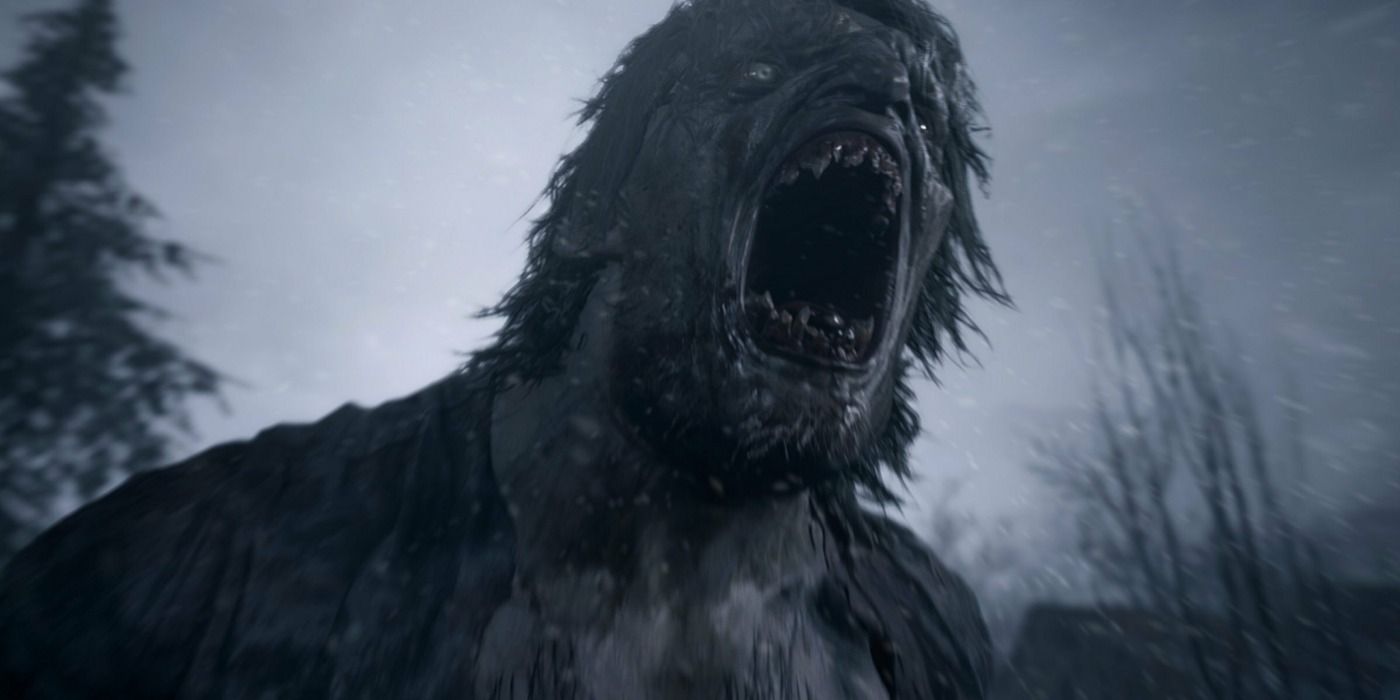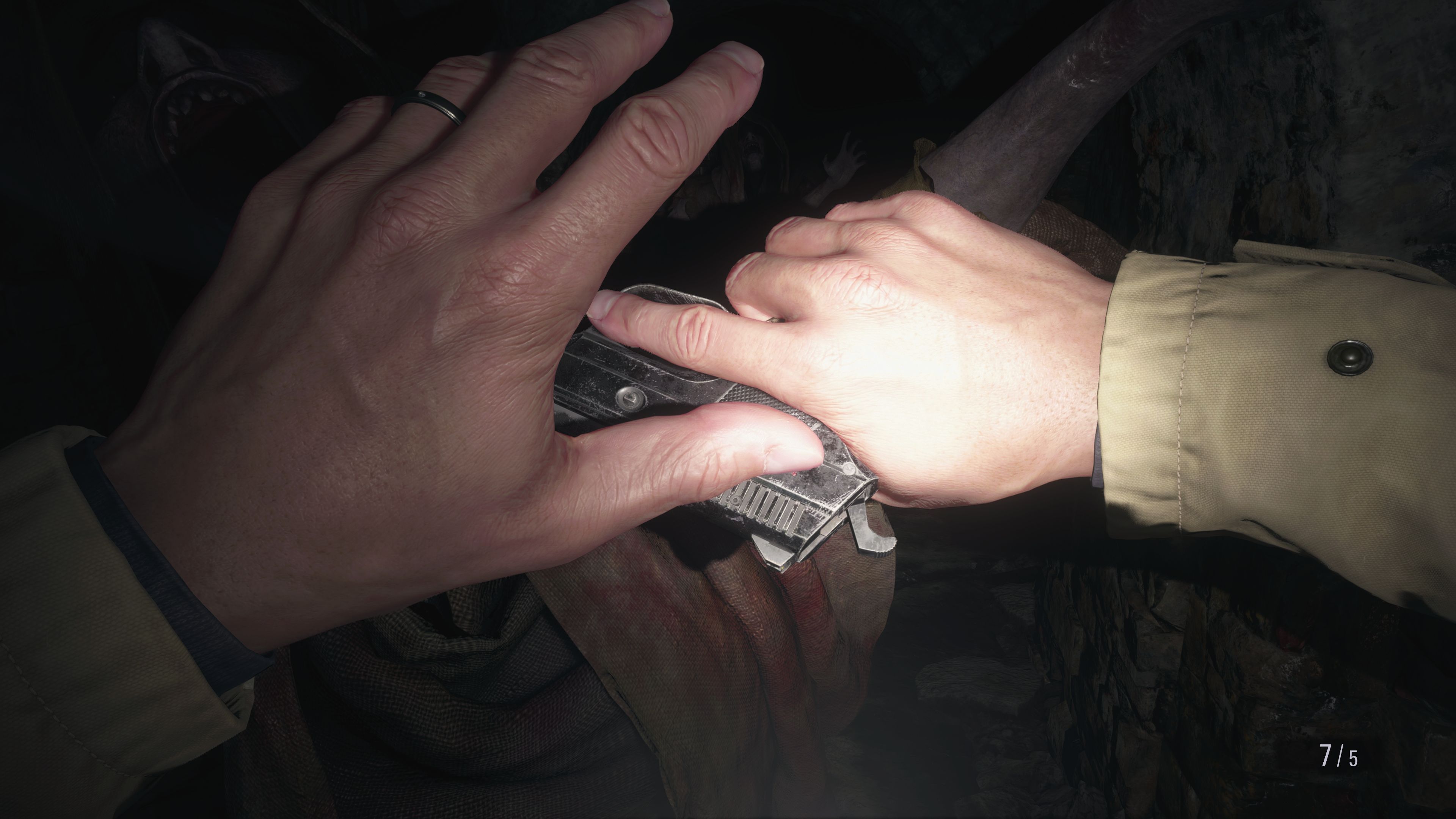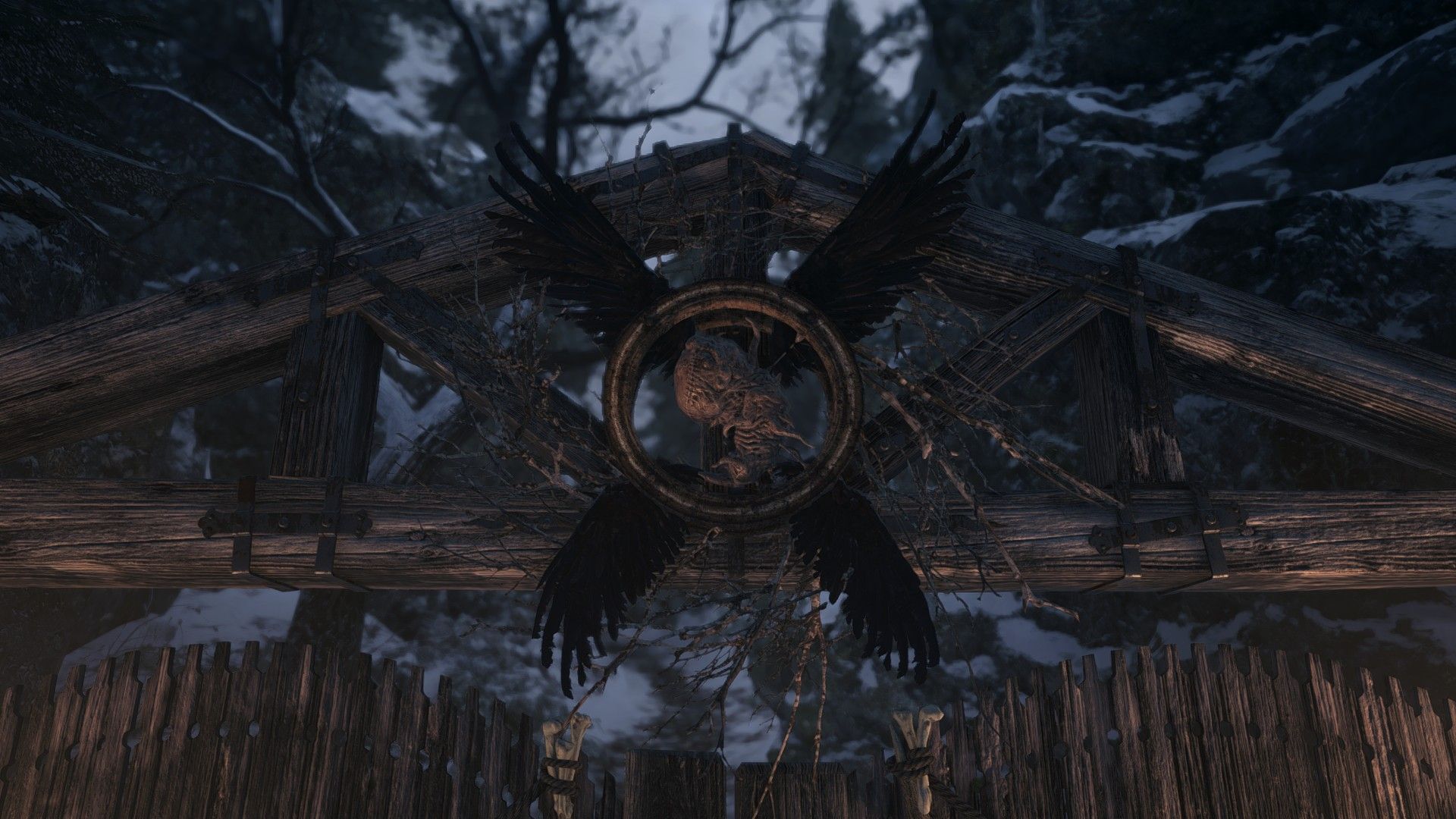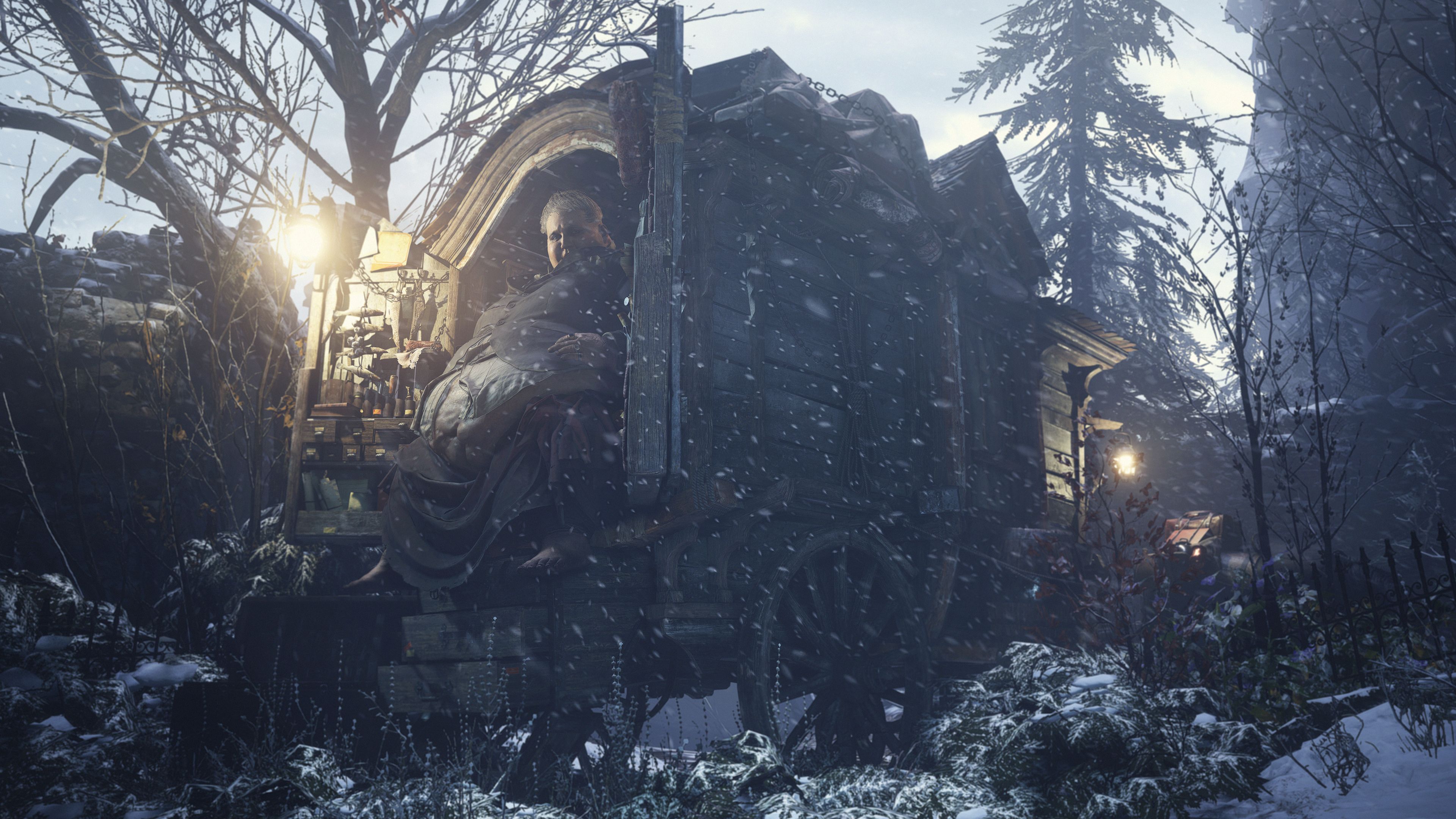Fans of Resident Evil 7: Biohazard should feel confident in picking up Capcom's newest release in the franchise, Resident Evil: Village. The eighth main title not only continues the saga of Ethan Winters and his family soon after the events of RE7, it also reveals new branches on Resident Evil's evolutionary tree and even reveals some surprising roots for the franchise. You can think of RE:V as Chapter 2 to the Winters Family story, so if that's something that entices you, feel free to stop reading now and shut yourself away from spoilers until you're able to play for yourself.
Resident Evil: Village may be a harder sell for those who haven't played RE7 or, harder still, those who have never dipped into a Resident Evil game at all. It keeps the first-person perspective for protagonist Ethan Winters, along with the teeth-grindingly frustrating and immersive mechanics that were introduced in the last game; you can check out the two-part Resident Evil: Village demo to see if that's a play style you're down with. But it's the gorgeously gothic storytelling and visual aesthetic that separates itself from the Baker Family's backwoods swamp milieu. That's what I fell in love with most of all in this game. And no, it's not all about the enchanting Lady Alcina Dimitrescu and her delightfully deadly daughters. There's so, so much more to Resident Evil: Village than vampire lady memes, and you owe it to yourself to see just how deep this mystery goes.
Our review of Resident Evil: Village follows below, and while we've done our best to leave major spoilers out so you can enjoy your experience, some minor spoilers are unavoidable, including events that transpired in Resident Evil 7: Biohazard.
The Story So Far
It suffices to say that Resident Evil 7: Biohazard was a tale of two families: The Bakers, whose singular affliction led them to kidnapping and murdering dozens of innocents in order to subject them to their particular brand of terror, and The Winters, the latest victims of The Bakers. You take on the first-person perspective of Ethan Winters who arrives at the Baker residence in search of his missing wife, Mia. Ethan is not exactly trained for the perils he's about to endure, but his heroic heart might just see him through to the other side.
After some tough choices, personal losses, and trauma-inducing confrontations, Ethan and Mia survived the ordeal, thanks in part to the assistance of franchise hero Chris Redfield of the B.S.A.A. While Chris and his crew handled clean-up at the Baker residence and the surrounding area of Dulvey, Louisiana, Ethan and Mia were able to try to live a semblance of a normal life. They decided to get away from the States and settle somewhere in Europe. And in time, they had a daughter together, Rosemary...
Once Upon a Time...
Let's be honest about a couple of things: First of all, that's a nice storybook ending for Ethan and Mia, something that doesn't often happen in the world of Resident Evil. Secondly, you know it's not going to last; this is still RE after all. But Resident Evil: Village likes to start things off in a positive, heartfelt way (which doubles as a basic movement mechanics tutorial) before it all goes to hell.
Much like the standout animated sequence from Harry Potter and the Deathly Hallows: Part 1, RE:V starts out with a surprisingly lovely yet dark fairy tale. There's much more to this bedtime story than meets the eye, so be sure to pay attention, but it's also our first introduction to the world that the Winters family is about to dive into, through no choice of their own.
It's probably made its way to you through social media, marketing material, or early reviews by now, but we'll keep the game's inciting incident mostly spoiler-free anyway. It suffices to say that Chris Redfield returns once more and has a hand in turning Ethan Winters' world upside-down. This event quickly leads Ethan (and the player) to the title location, now in search of his lost daughter, Rose.
The Village...
Resident Evil: Village doesn't waste much time before dropping you into the macabre and otherworldly action of its title town. The unnamed village acts as a sort of hub for Ethan's travels, but that doesn't mean it's a safe haven; far from it. The first introduction to the village itself treats us to the game's gothic imagery, assaults our ears with some of the best and most disturbing SFX work I've heard in a while, and delivers a creepy vibe that pervades the timeless town that's absolutely awash in death and destruction. It's glorious. And while most of the action and puzzle-solving machinations take place in the gorgeous, grotesque, and expertly engineered boss lairs that span off of the hub, the village itself holds many and layered secrets to discover. And Ethan might just have to discover all of them if he hopes to survive the horrors to come.
One frustrating thing about Resident Evil: Village is also an aspect of its genius. The layout of the village and its surrounding area, if viewed from above or via your map, is a sprawling, twisty-turny amalgamation of cobbled-together roadways, steampunk constructions, regal towers that stretch to the skies, and slime-coated waterways whose depths no one living may truly know. Village looks absolutely huge in comparison to previous RE games. And yet, the level design is actually pretty straight-forward and linear, it just doesn't look that way.
While you're playing through the early game, it doesn't feel that way either. Instead, it feels like you've missed something, like you should have checked one more drawer or opened one more door or connected one more pathway. Don't worry; not only is there handy yellow paint splashed around everywhere to give you a clue as to where to go next, there's also a lot of backtracking in this game as you progress, gain new items, and solve progression-unlocking puzzles. It's maddening, it's frustrating, and it's clever and devious as all hell. I loved it, and I think you will, too, once you learn to trust your map and your progress. (Fair warning: There are some areas you won't be able to gain access to once you leave them, so be sure to explore thoroughly and turns those red rooms blue as you're able.)
Resident Evil: Village is also very well-paced for an RE story and game, balancing both the amounts and styles of puzzles against the more action-packed shoot'em-up sections of the game. I genuinely was never bored nor hoped a given section would just be done already; the hop back and forth between "Hmm, let me think about this puzzle" and "Oh God, shoot the thing and run!" moments were very well done. But while the puzzles themselves aren't particularly difficult to figure out nor needlessly complicated or frustrating to solve, boy oh boy, there are going to be some epic battles to be waged as players go up against level bosses, treasure bosses, sub- and mini-bosses, and the bosses themselves. I cannot wait to watch the struggle in realtime. (For transparency's sake, I played through RE:V on Journo Mode, a.k.a. "Casual," for purposes of experiencing the story in limited time; I notched 11 hours total, and I found most but not all of the available loot. There's an achievement for clearing the game in 3 hours, so it's certainly possible to do so.)
While Ethan is busy exploring this village out of time and searching for his daughter, there's quite a bit going on in and around the village itself. The dark forces that have congregated there (including, you guessed it, the tall vampire lady and her daughters) have a plan they've long been waiting to carry out, but more than just Ethan has designs on stopping them. That story is absolutely worth the experience, so I'll save the finer points for you to enjoy, but I have to point out one of my favorite parts of RE:V: Its story's gothic fiction influences.
It's not a stretch to say that Lady Dimitrescu and her blood-drinking daughters who live in an opulent mountainside castle were inspired by the OG vampire Dracula, as brought to life (or undeath) in Bram Stoker's 1897 novel. Extend that theme to the other dark lords and you'll find influences such as Mary Shelley's 1818 novel "Frankenstein; or, The Modern Prometheus," H.G. Wells' "The Island of Dr. Moreau" from 1896, and even various creepy doll stories, like the early 20th century Japanese legend of Okiku. If RE7 had a strong 70s aesthetic thanks to Southern Horror films like The Texas Chainsaw Massacre, RE8 went in a wildly different direction thanks to its gothic roots, an aesthetic choice that allows for plenty of gorgeous and glamorous creations, as well as gruesome and grotesque monsters. And oh dearie me, there are some true delights and horrors to be found.
I'll save my breakdown of Resident Evil: Village's particular horrors for a later article, but it's safe to say that it includes certain moments, characters, or circumstances that will absolutely land in players' phobia zones. Most people will probably handle the Lycans and the Dimitrescu clan just fine, but they're just the beginning. RE:V has such a wide variety of horrors that, in a bid for quality over quantity (in most cases), there's sure to be at least one that really, really gets to you. The cool thing is, that "one" will probably be different for everyone who plays it. The creature, monster, character, and boss designs in this game are fantastic, and they complement their associated areas perfectly well. Even your boon companion, the massive merchant known only as The Duke, will scare you out of your wits on a couple of occasions. It's a treat to play through all of these areas, even if your heart is thumping in your chest as you do so.
This is as good of a place as any to talk about my only knock against the game's mechanics. The first-person perspective should give you a pretty free range of view during combat scenes, and for the most part it does, but when it fails, its maddening. More claustrophobic fights feel like you're trapped inside a box with a giant monster on the outside (which isn't far off, in some cases) rather than an immersive experience that puts you toe to toe with the baddie. Complicating matters here is Ethan's mind-bogglingly bad stamina system, which seems to come and go without explanation; I understand throttling Ethan's speed during particular chase sequences or battles, but please let me mosey at my own pace while exploring cleared-out areas and navigating long passages.
Lastly, let's spare a bit of space for the game's item management system and array of weapons available for Ethan to use. Like most RE games, you'll want to expand your storage grid as early and as often as you're able, so be sure to save up your currency (Lei, in this case) to do just that. Quest items, Treasures, and other unusable curiosities will be saved in separate windows, which is nice, but you'll need all available space if you want to collect every weapon in the game and have enough ammo to make them worthwhile. (As far as I could tell, there's no storage locker set aside for Ethan to stow his gear; you're gonna carry that weight.) Thankfully, the weapons are friggin' awesome and worth collecting. The aesthetics of them range from new and shiny, to old and worn, to ornate and old-timey; I kinda love all of them. They also come with the added value of making Ethan's travels a bit easier by bringing more variety and firepower into his arsenal. Add in the mods that you can either find or purchase from The Duke and boy does the whole set get expensive (I didn't quite manage to kit everything out); you might find yourself choosing between certain upgrades or saving for certain mods. That's probably the hardest puzzle of the whole game, which brings me to ...
... and Beyond
You might think you have RE:Village figured out after you've gone to and from the village hub itself a few times. There's a good chance that you're wrong. RE:V not only possesses its own unique story, influenced by gothic inspirations, in which to lure Ethan into its deadly web, it also strongly ties into existing RE lore in fun ways. The evolutionary tree of Resident Evil gets all-new branches thanks to Village, and its roots grow even deeper as incredible new truths are unveiled. As a lore hound, I loved this story's twists, turns, and reveals, both from a character perspective and from a broader over-arcing franchise narrative. It was a blast discovering and experiencing all of it. However, I must leave you with two caveats -- one minor, one major -- before we wrap this up.
Firstly, there's a moment fairly late in the game that might have players putting down their controllers in all the wrong ways. It's happened in games before, it'll happen again; I strongly suggest that players take a break here if they need to, as long as they come back and push onward. Not only does that moment lead to a cool in-game experience, it also proves to be essential for the story.
The major issue I have with RE:V, however, is more of a personal one. In a former life, I was a microbiologist. But I was an RE fan well before that. So I took the sardonic, anti-corporate tone of Resident Evil games and their "only good guys with guns can triumph over mad scientists with viruses" approach to storytelling with a grain of salt. They're just games, right? Well, then COVID hit, and with it came an increase in, not an understanding of the scientific method or the hundreds of years of germ theory and its painstaking progress, but a backlash against it, a pushback due to fear, ignorance, anger, and any combination of negative human emotions. Anti-vaxxers existed before COVID and they'll persist well after vaccines have restored a somewhat normal way of life once more. But it was disappointing, to say the least, to learn that RE:V continues its trend of heavily armed and armored "heroes" shooting the hell out of mad scientist villains who almost always inevitably act out of selfish and terroristic interests. Here's hoping the other side of the COVID pandemic shakes up that tired narrative.
With my soap box now safely stowed away, I'm back down on Earth to say that, yes, Resident Evil: Village is a game about vampires, werewolves, and all manner of unholy abominations wreaking havoc in an unnamed modern European village that looks like its been transported back in time 100 years. Not exactly the kind of story you should base your worldview on. What RE:V is, however, is an absolute blast to play, a well-balanced puzzler and action game with expertly designed levels and lovingly detailed characters and creatures, most of whom want nothing more than to eat your face. Don't let them do it. Sure, you can let them get close, stare at them for a while if you must (they're beautiful, as is the gothic scenery), but in the end, you still have to be the hero. Your family is counting on you. You don't want to let them down, and you don't want to miss out on the singular experience that is Resident Evil: Village.
Rating: B+

